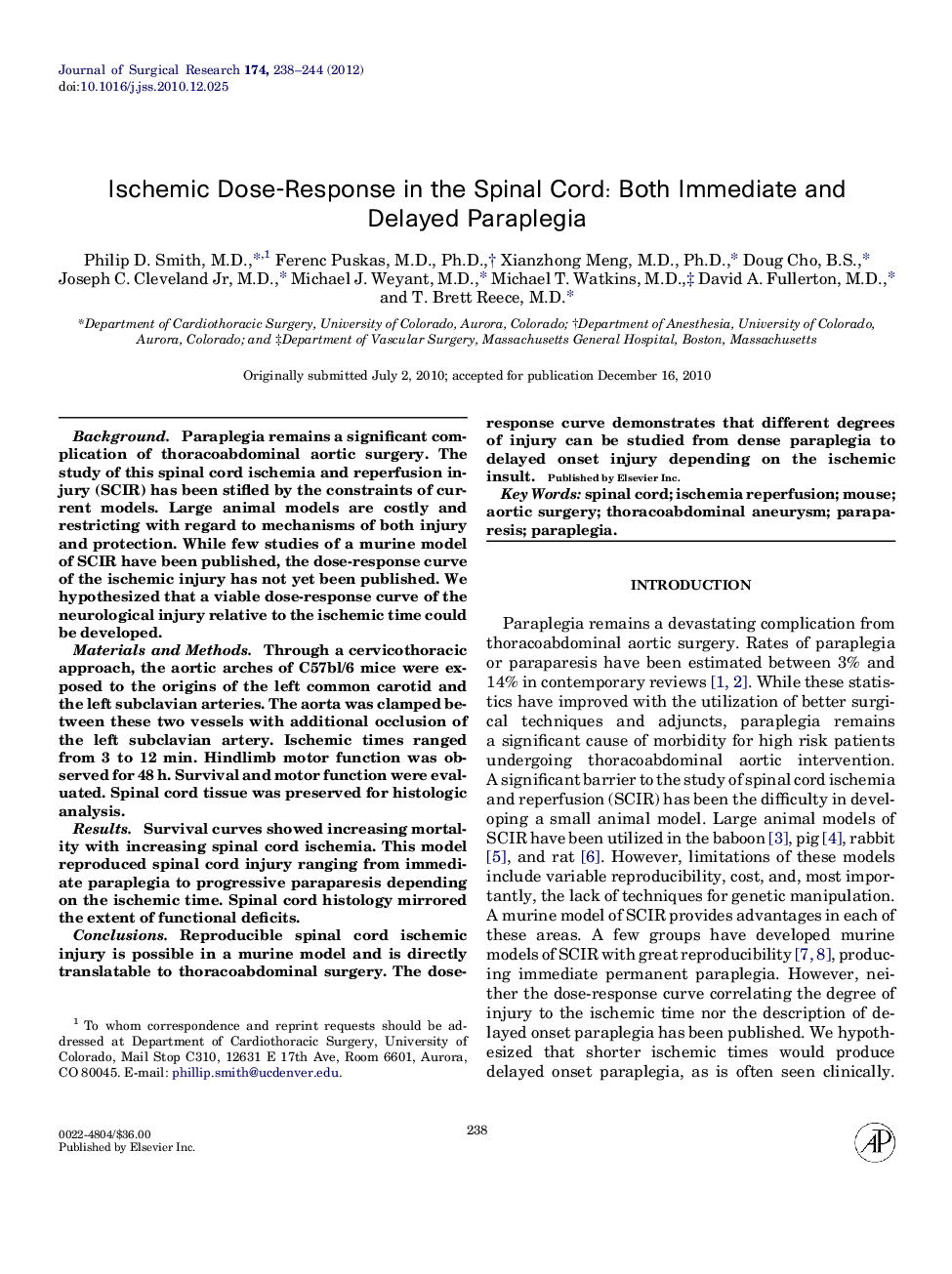| Article ID | Journal | Published Year | Pages | File Type |
|---|---|---|---|---|
| 6254651 | Journal of Surgical Research | 2012 | 7 Pages |
BackgroundParaplegia remains a significant complication of thoracoabdominal aortic surgery. The study of this spinal cord ischemia and reperfusion injury (SCIR) has been stifled by the constraints of current models. Large animal models are costly and restricting with regard to mechanisms of both injury and protection. While few studies of a murine model of SCIR have been published, the dose-response curve of the ischemic injury has not yet been published. We hypothesized that a viable dose-response curve of the neurological injury relative to the ischemic time could be developed.Materials and MethodsThrough a cervicothoracic approach, the aortic arches of C57bl/6 mice were exposed to the origins of the left common carotid and the left subclavian arteries. The aorta was clamped between these two vessels with additional occlusion of the left subclavian artery. Ischemic times ranged from 3 to 12 min. Hindlimb motor function was observed for 48 h. Survival and motor function were evaluated. Spinal cord tissue was preserved for histologic analysis.ResultsSurvival curves showed increasing mortality with increasing spinal cord ischemia. This model reproduced spinal cord injury ranging from immediate paraplegia to progressive paraparesis depending on the ischemic time. Spinal cord histology mirrored the extent of functional deficits.ConclusionsReproducible spinal cord ischemic injury is possible in a murine model and is directly translatable to thoracoabdominal surgery. The dose-response curve demonstrates that different degrees of injury can be studied from dense paraplegia to delayed onset injury depending on the ischemic insult.
